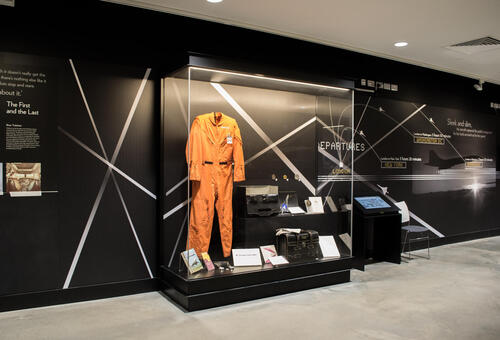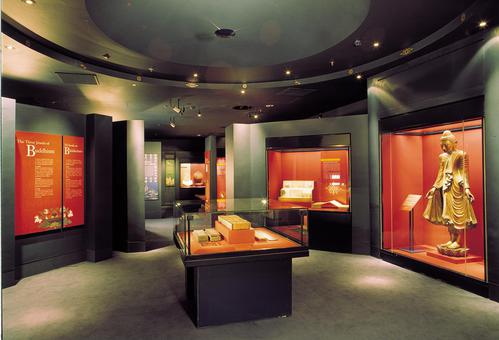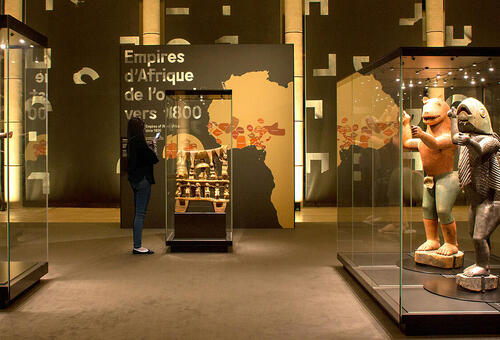The museum & the collection
Musée de Cluny, located in the heart of the Latin Quarter of Paris, is the only national museum dedicated to the Middle Ages. Since its creation in 1843, it has acquired unique and incredibly famous pieces such as the altar front from the Basel Cathedral, as well as one of the most famous medieval works in the world, "The Lady with the Unicorn".
Spanning more than a thousand years, the Middle Ages are one of the longest periods in our history. The ambition of the major modernisation work initiated in 2011 was to share with the public all the richness and complexity of this period, and to reopen the cramped building to the city.
Thanks to the talent of architect Bernard Desmoulin and scenographer Adrien Gardère, the museum reappeared in May 2022, fully revealing the magnificence of its medieval heritage: collections of 24,000 works in a unique architectural setting: a 15th century manor house adjacent to Gallo-Roman thermal baths.
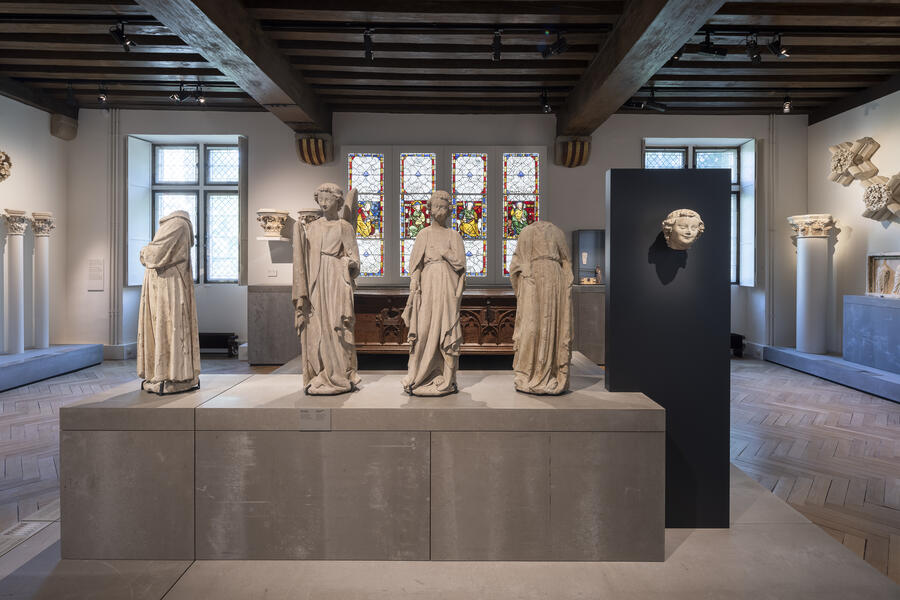
The assignment
The challenge of renovating the museum was to modernise the building and the museography to make it an appealing place, open to the city and accessible to all its visitors.
The challenge in redesigning the exhibition spaces was to include the contemporary extension while at the same time aligning aesthetically with the original museum space. The particular context of the historic building had to be taken into account and above all not distorted.
The architects’ objective was to contribute to the overall unity of the new museum through a minimalist and refined aesthetic. To achieve this sense of unity, light-coloured materials and shapes were carefully chosen to enhance the polychromy and diversity of the works of art. This same aesthetic requirement was applied to the entire design of the museographic devices, which was entrusted to Meyvaert.
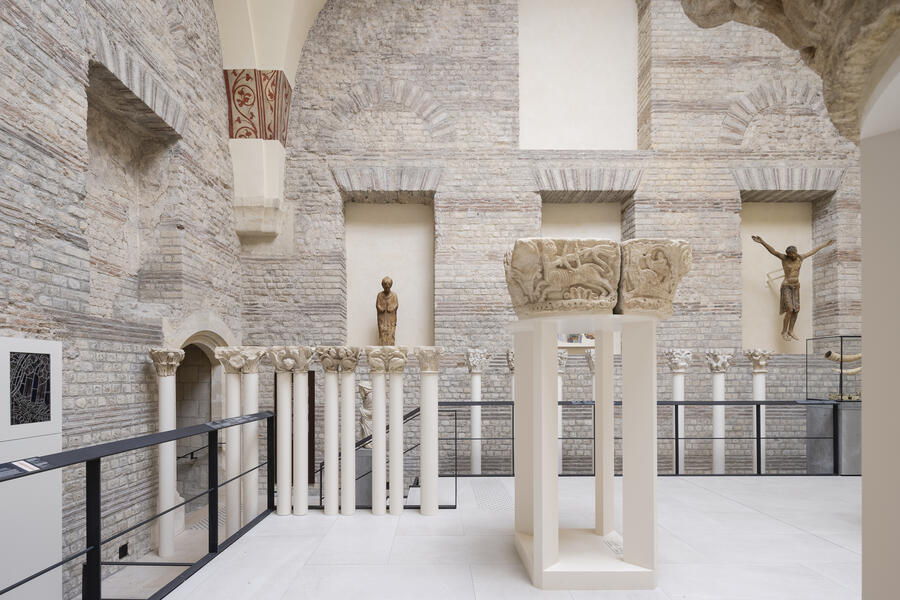
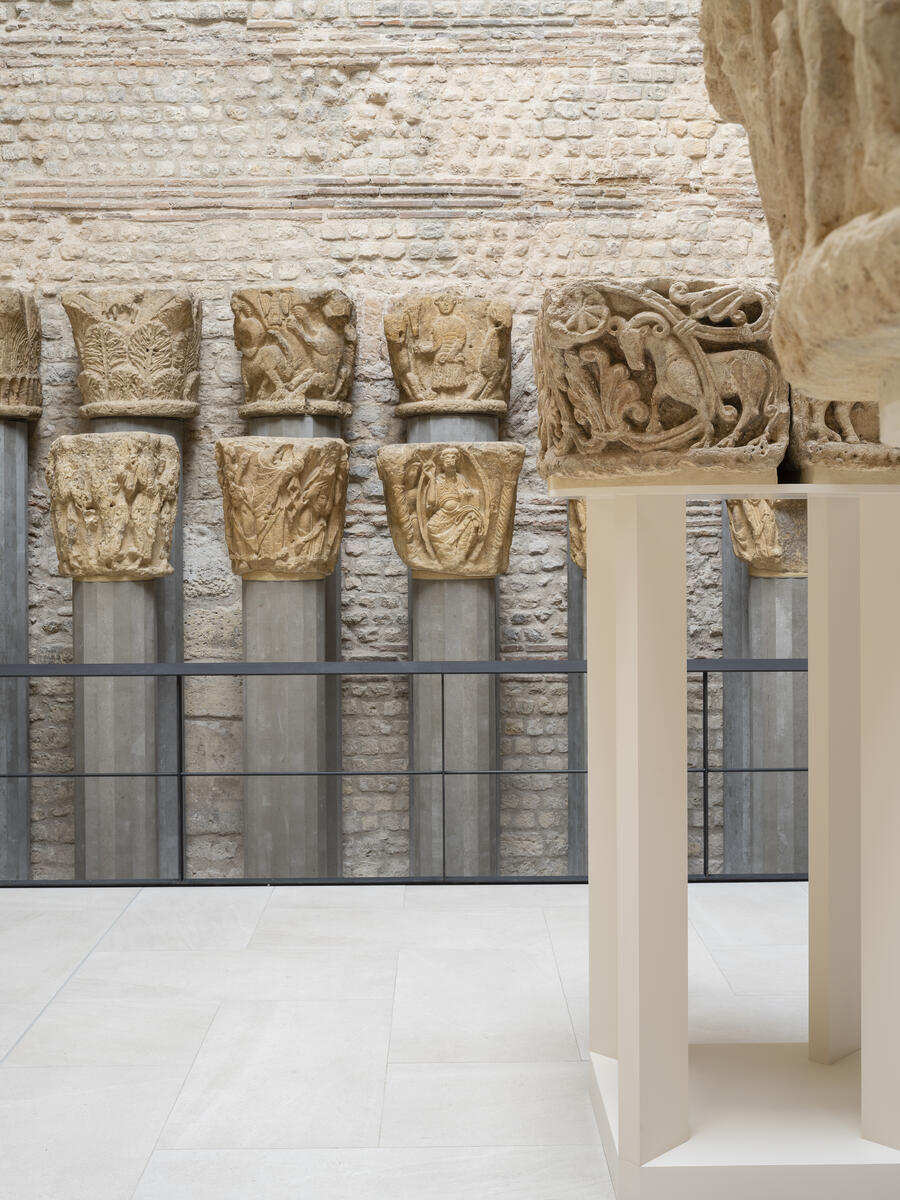
The project: challenges & results
Meyvaert created a complete layout for the new museum, including custom-made showcases, pedestals, platforms, columns and stained glass windows. The development of the right aesthetic response to the project involved numerous technical challenges, to which Meyvaert was able to find solutions.
One particular challenge was the use of an extremely attractive material: viroc, whose unprecedented application in a museum required the application of our workshops’ most practiced skills.
This material, which has a concrete appearance, was worked in many ways: in facets, or in panels of various thicknesses and textures. Plinths with a new and appealing visual were created. Other plinths had to be in perfect harmony with the original wall and required a dedicated search for strictly identical tiles.
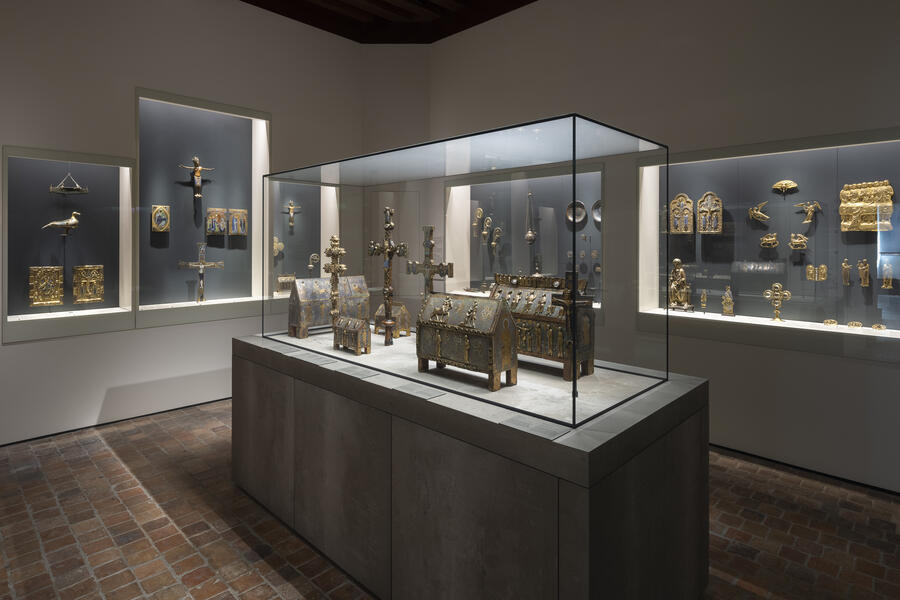
In order to meet the need for a balance between the exhibition devices and the architecture, and to achieve a minimalist appearance, the visual finesse of the showcases was pushed to the maximum.
Our engineers developed a new profile and invisible openings, using ingenious systems to ensure that the showcases are nevertheless able to accommodate large and heavy works.
Several systems were used: self-supporting showcases with minimalist columns where the door is not visible, tabletop showcases with a double-height hydraulic lifting system for the bell, as well as niche showcases that integrate perfectly with the building.
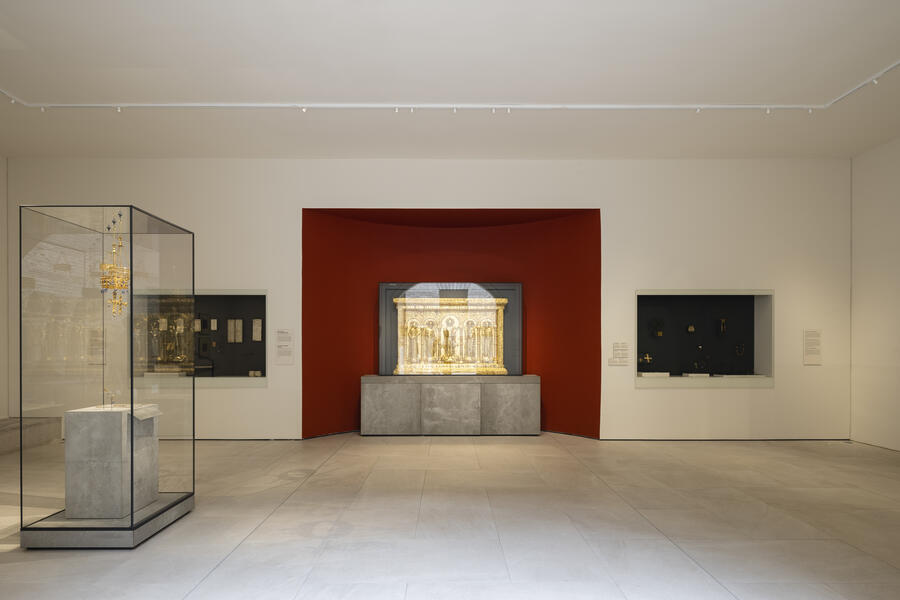
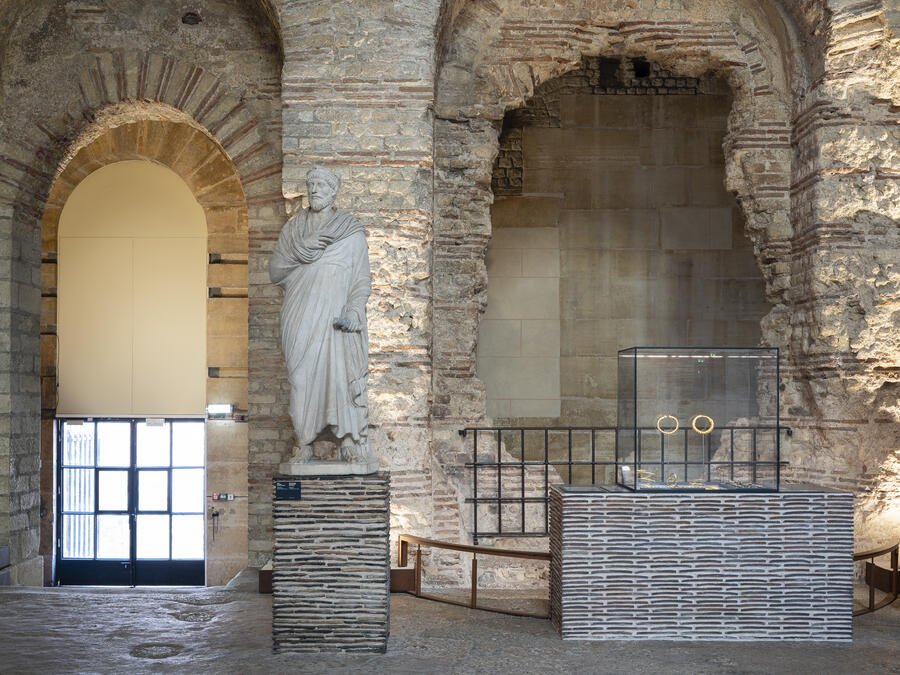
Various challenges also had to be overcome during the course of the project, starting with the hectic schedule, which had to be constantly revised due to the health context. In addition, the medieval architecture of the site meant that access and constraints were particularly complex for the installation teams. The installation teams were able to draw on their flexibility and experience in using various machines and devices adapted to historic buildings.
Throughout the entire museographic project, our teams demonstrated their expertise in the creation of tailor-made showcases and personalised services on a large scale. Unique work was carried out on the use of exclusive materials and the development of technical solutions to meet the requirements of conservation, size and weight of the works.
The personalised aspect of this renovation is revealed in all its splendour through the unprecedented presentation of the stained glass windows, now included in backlit boxes specifically adapted to the shape of each one.
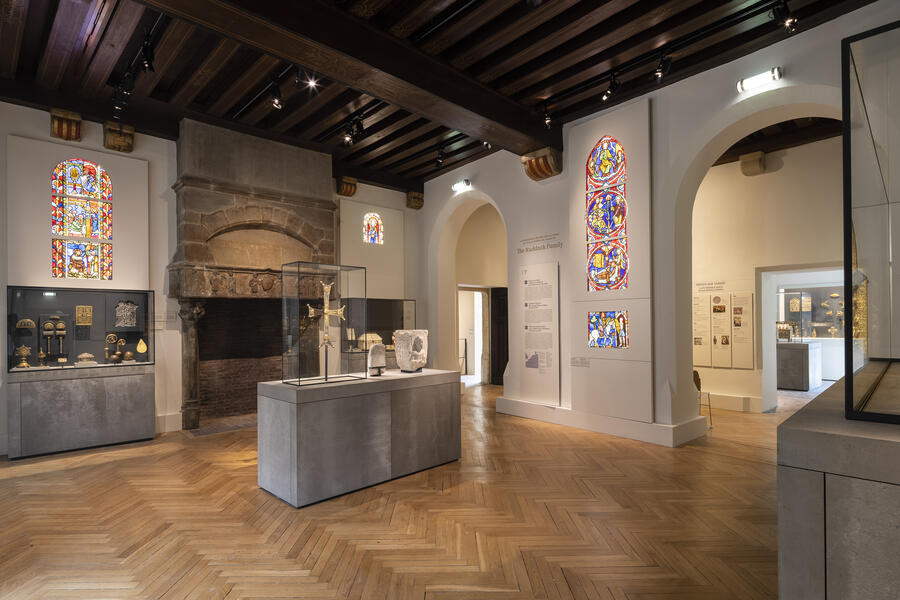
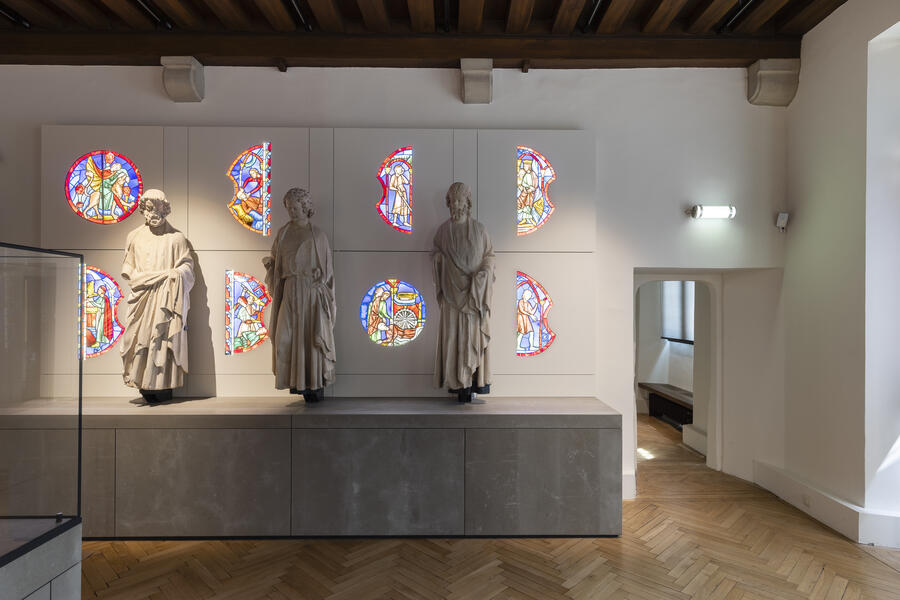
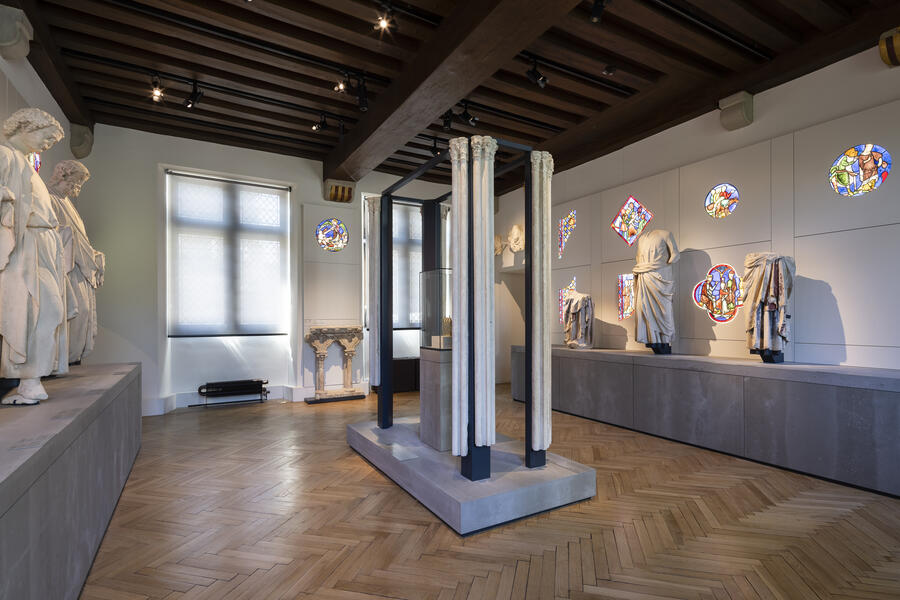
The final result is a perfect marriage between aesthetic and technical requirements, offering a fluid, contemporary and harmonious integration of the display cases in the scenography imagined by the architects.
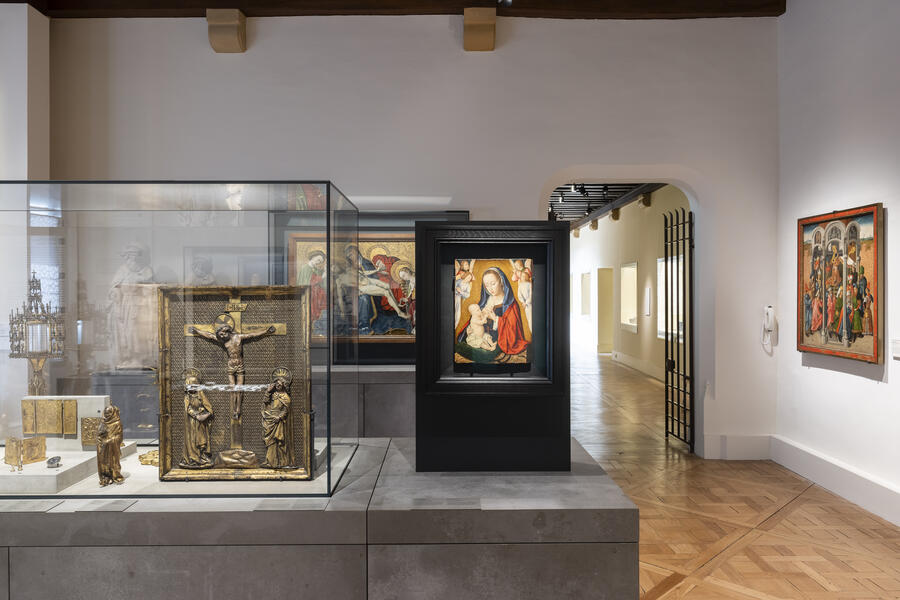
© Alexis Paoli
Project
Musée de Cluny - National Museum of The Middle Ages
Solutions
Country
France
Year
2019 - 2022
Type of museum
Art & History Museum
Designer
Studio Adrien Gardère
Architect
Bernard Desmoulin
Scope
78 showcases, 124 columns, podia and socles, 22 glass-in-lead displays
More info
Photos: © Alexis Paoli
